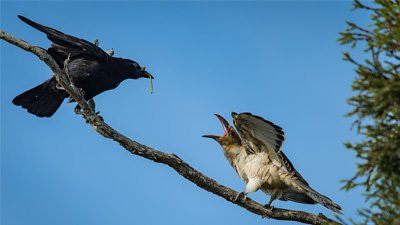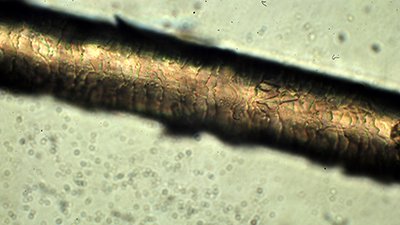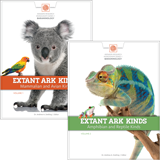Penguins: All Dressed Up and Nowhere to Go
Designed for their aquatic lifestyle
Penguins have captured many people’s imaginations. These aquatic, flightless birds have been incorporated into many cartoons wearing tuxes, dancing intricate choreographies, or providing strategic care for others. Their black and white exteriors, upright postures, and natural behaviors can definitely fuel an author’s imagination. But what makes these birds so unique and the subject of continued scientific research? Reuters recently highlighted the research of Theresa Cole and others on penguins, as they look to obtain a more robust understanding of what makes penguins unique both physically and genetically.1
In today’s classification, penguins are in the order Sphenisciformes, genus Spheniscidae.2 There are currently estimated to be 27 species of extant (living) species of penguins with a range from Antarctica all the way up to the Galapagos Islands. Based on the fossil record, this is believed to be only 25% of total penguin species.3
All penguin species have similar body shapes but vary significantly in height (15–51 inches) and weight (0.5 to 83 pounds). Their streamlined shape allows them to dive deep into ocean waters.4 Varying amounts of blubber help penguins acclimate to a variety of water temperatures from just above freezing to 75 degrees Fahrenheit.5
Unique
A lesser-known, unique trait of penguins is that they do not have a crop as part of their digestive tracts. In most birds, the crop is in the upper digestive tract above the stomach and contains rocks the animal has ingested. These rocks help mechanically break down food before it travels to the stomach. In the case of penguins, food goes straight to the stomach where it is broken down by the stomach’s two different areas (proventriculus and ventriculus). Most birds also commonly have hollow bones, known as pneumatic bones. These bones are lighter and thus take less energy to lift in flight. But penguins have denser bones, with only small amounts of air. This is not an issue when diving through water, but it can make certain veterinary medical procedures more challenging.
Another challenge for veterinarians who work with penguins is that, depending on the species, their airways (trachea) can branch at different heights, making placing an endotracheal tube for anesthesia more difficult. But also of note, their feet and flippers have such good countercurrent exchange (normally used to keep heat in while diving in cold water) that ice packs may be used to keep them cool during these procedures requiring anesthesia. These are just a few unique traits penguins have which are not as obvious as their black and white tuxedos.6
Working with wildlife—both in the wild and in captivity—can leave us with many unanswered questions.
Working with wildlife—both in the wild and in captivity—can leave us with many unanswered questions. A portion of that challenge is the small number of individuals that we can observe. The research highlighted by Will Dunham in his Reuters article takes an expanded look at penguins morphologically (physical body type) and genetically (the information in their DNA). Theresa Cole and her team have assembled full genomic data from all 27 species of penguins alive or recently extinct today. This is possible, in part, due to the research efforts of the B10K project that is working to collect draft genomes of all species of extant birds.7 Cole’s team has also been able to review fossil evidence for all known species of penguins both living and extinct.
In studying the genomes and comparing them to physical characteristics of penguins extinct and extant then comparing to other birds, the research team believes they have identified certain parts of the DNA that encode for proteins that play a role in oceanic diving, taste and diet, vision, oxygenation, body size, immunity, and thermoregulation (Figure 4a from the article). They are also able to look at different species of penguins and compare the different codes and see which of those genes stay the same amongst all the penguins and which show variety amongst the different species. This information could lead to a variety of discoveries, including how to treat and care for penguins both in the wild and in captivity, products for human use (also known as biomimicry), or information to help decode DNA sequences in other animals. (See “The Language of DNA” for more information on DNA.)
Starting Points
Unfortunately, that is where the science ends and the storytelling begins. Cole and her team are looking through the lens of evolution at their data. They look at the differences in DNA between different penguins and between penguins and other birds and believe they can use that to calculate common ancestors and how long ago these presumed ancestors lived. They believe that penguins have been around for approximately 60 million years. Their interpretation of the data is based on computer software that has been programmed to assume this long evolutionary timeline. It is not surprising then when their results also show long periods of time. When describing their timelines and levels of relatedness between penguins, words like inferred, estimated, averaged, may have, and likely are used. They have to utilize what I like to call “squishy” words because if they are honest, they know that if their model is wrong then their conclusions are wrong. They also have to make other assumptions, like that their few samples of each species are representative of the species as a whole and that reproductive rates and genetic mutation rates have been consistent for 60 million years. They hypothesize that larger variation between species indicates a time of environmental change in the past, but even that is assumed based on DNA variation, and there is no way to test if there was an environmental change in a past time or where penguins were located at that time in history.
What do we know then? The Bible tells us penguins were created on day five with the rest of the bird kinds about 6,000 years ago. (See “How Old Is the Earth?”)
And God said, “Let the waters swarm with swarms of living creatures, and let birds fly above the earth across the expanse of the heavens.” So God created the great sea creatures and every living creature that moves, with which the waters swarm, according to their kinds, and every winged bird according to its kind. And God saw that it was good. And God blessed them, saying, “Be fruitful and multiply and fill the waters in the seas, and let birds multiply on the earth.” And there was evening and there was morning, the fifth day. (Genesis 1:20-23)
God created each bird after its own kind. We expect that all birds will share some level of genetics as they all have hearts, lungs, feathers, and wings but that, at some level, they will have DNA unique to their kind. The Bible also tells us that two of every kind was brought into the ark (and seven or seven pairs of clean animals and flying animals per Genesis 7:3).
And of every living thing of all flesh, you shall bring two of every sort into the ark to keep them alive with you. They shall be male and female. Of the birds according to their kinds, and of the animals according to their kinds, of every creeping thing of the ground, according to its kind, two of every sort shall come in to you to keep them alive. (Genesis 6:19-20)
The variety of penguins we see today with their genetic variety came from the pair of penguins that came off the ark (flightless birds would not have met the Genesis 7:3 criteria). Our all-knowing, all-loving Creator God placed in those penguins enough genetic variety so they would be able to adapt to the local environments as they dispersed from the ark and traveled to their current locations.
God has provided for the continued needs of the penguins, and he does so much more for you and me.
Consider the ravens: they neither sow nor reap, they have neither storehouse nor barn, and yet God feeds them. Of how much more value are you than the birds! (Luke 12:24)

As we consider the intricacies of the penguins from their unique physical features and DNA, let us not see millions of years of death and disease dressed up as science. Let us instead see God’s provision for his creation—especially for us who are made in his very image. He has provided not only the breath in our lungs and DNA in our cells but a way of redemption for a fallen creation. That certainly is a reason to celebrate. So, the next time you see a penguin at the zoo, waddling around in its finery, remember that God cares for you even more.
Footnotes
- Will Dunham, “Scientists Uncover History of ‘Ridiculously Charming’ Penguins,” Reuters, July 19, 2022, https://www.reuters.com/lifestyle/science/scientists-uncover-history-ridiculously-charming-penguins-2022-07-19/; and T. L. Cole, C. Zhou, M. Fang, et al, “Genomic insights into the secondary aquatic transition of penguins,” Nat Commun 13, 3912 (2022): https://doi.org/10.1038/s41467-022-31508-9.
- A. Snelling, ed., Extant Ark Kinds: Mammalian and Avian Kinds, Volume 1 (Answers in Genesis, 2018): 81.
- D. T. Ksepka, S. Bertelli, and N. P. Giannini, “The Phylogeny of the Living and Fossil Sphenisciformes (Penguins),” Cladistics 22, no. 5 (October 2006): 412–441, https://doi.org/10.1111/j.1096-0031.2006.00116.x.
- R. E. Miller and M. Fowler, Fowler’s Zoo and Wild Animal Medicine, Volume 8 (St. Louis, MO: Saunders, 2015): 82–83.
- AZA Penguin Taxon Advisory Group. (2014). Penguin (Spheniscidae) Care Manual. Silver Spring, MD: Association of Zoos and Aquariums.
- Miller and Fowler, Fowler’s Zoo and Wild Animal Medicine, 83–83.
- The Bird 10,000 Genomes (B10K) Project, https://b10k.genomics.cn/.
Recommended Resources

Answers in Genesis is an apologetics ministry, dedicated to helping Christians defend their faith and proclaim the good news of Jesus Christ.
- Customer Service 800.778.3390
- © 2024 Answers in Genesis









